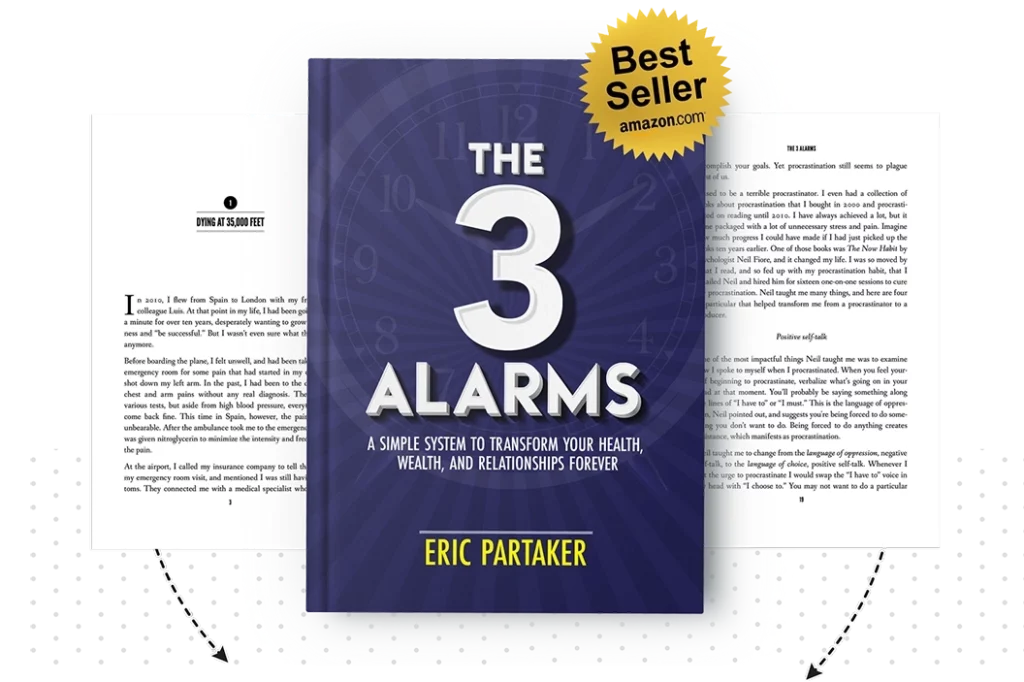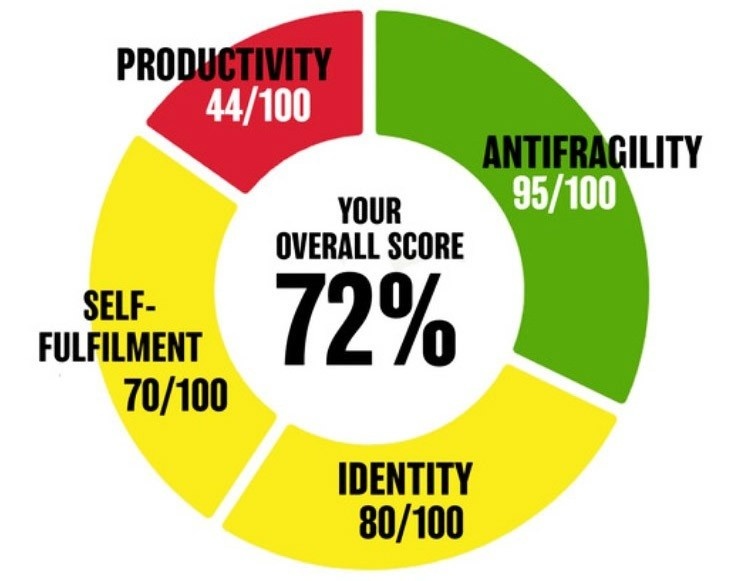SUMMARY
- Creating positive habits is not as hard as you think. It’s not a personal flaw, but rather a design flaw. The way you approach it isn’t right. First of all, we have to understand how habits are formed. Habits essentially have three components, which Professor BJ Fogg, who runs Stanford University’s Behavior Design Lab, calls the ABC. There’s the Anchor, or the trigger; the Behavior, the actual habit or whatever it is that you’re doing; and Celebration, the reward. Anchor, Behavior, Celebration.
- To build a better habit, we want to start super small. For example, if you wanted to start a reading habit, what’s the smallest version of that habit that you could do without failing on a daily basis, ideally? It might be, I’m going to read one sentence.
- We then want to develop a celebration. We need to celebrate because when we receive positive emotions associated with doing a particular thing, it becomes ingrained. We can hack this by celebrating in our head the moment we’ve done the tiniest version of that habit. Going back to the reading habit, you’ve read one sentence. What’s your celebration? You can picture yourself in a stadium full of people, with them telling you, job well done!
- We now need to anchor it to something that is already occurring within our day. Maybe you can decide that every time you pass your bookshelf, you will grab your book and read that one sentence. We play this a little bit further: Anchor, grab the book. Behavior, read one sentence. Celebrate, a mental visual celebration.
- By starting small, what ends up happening is that in that moment, when you’ve read that single sentence, inertia starts, some momentum starts. And once you’re in action, something tends to stay in action, including you. And you’ll find that you’ll continue reading on beyond that first sentence. You might read a full page, the next day two pages. And voila, a habit is formed.
- The point is, we’re focusing on the smallest possible win. Anchoring that to something that you will do, something that you will come in contact, visually in the course of your day. And then we’re celebrating. You’re getting your reward the moment you’ve done that tiniest version of it. And then that habit will grow over time, if you just focus on creating consistency first.
TRANSCRIPT
Creating positive habits is not as hard as you think. It’s not a personal flaw. There’s nothing wrong with you. It’s just a design flaw. The way in which you’re approaching it isn’t right. But today I’m going to show you from a behavioral science point of view, how to approach building habits in a much stronger way so that you can experience success more consistently in whatever areas of life or business matter most to you.
Hi, my name is Eric Partaker and I help entrepreneurs, leaders, and individuals, reach a peak level of performance in their business and life, but without sacrificing their health and relationships. Today I’m going to be drawing on a coaching apprenticeship and certification that I did with Prof. BJ Fogg, who runs Stanford University’s Behavior Design Lab. In my quest for peak performance. I knew that I had to focus on the art of building better habits and also deconstructing and getting rid of bad habits. I knew that the trajectory of my life, whether it was positive or negative, would essentially be the sum of how many good habits do I have running versus poor habits do I have running.
There was also so many things that I constantly wanted to do and improve and experience in life. And I just kept feeling that I wasn’t getting around to it. That I wasn’t doing these things. That I was continually letting myself down. And so I decided to go all in deep on the science of habit formation, and did that coaching apprenticeship and certification with Prof. Fogg. And today I want to teach you some of the things that he taught me. So, number one, we have to understand, well, how are habits formed? How does this process work? And habits can essentially have three components. There’s a trigger, something that prompts you to want to take action.
Then there’s the behavior, the actual habit or whatever it is that you’re doing, followed by the experience of a reward. So again, trigger, the habit, and then a reward. Now, Prof. BJ Fogg talks about this in a slightly more memorable way. He talks about it as ABC. So, anchor, behavior and celebration. And this is the framework that we can use to build better habits, provided we do it in a very certain way. And by the way, this method that I’m about to take you through. This has been validated with over 30,000 people participating in this particular study so far.
So the whole principle of this framework is that to build a better habit, we want to start super small, tiny, small. And we want to pick the smallest possible version of doing our new habit that we could do without any chance of failure. So for example, if you wanted to start developing a reading habit, what’s the smallest version of that habit that you could do without failing on a daily basis, ideally? And it might be, I’m going to read one sentence. You’d be impossible to fail that, right? You always would have time to at least read sentence.
And then we want to develop a celebration. So after we’ve read that one sentence, we need to celebrate because it’s emotion which creates the habit formation. It’s emotion which embeds that new habit within our brain. You can think of this tiniest version of the habit that we’re beginning with, like that reading that one sentence as the seed that we’re planting. And to get that seed to grow into the full blown habit, reading for 30 minutes or reading for an hour. Eventually reading the book, growing from a seed to a tree. However you’d like to think about it. To get that to grow, we need to water it. And we water it through emotion.
It’s emotion that brings it to life. Emotion is also like the sunshine and the water for that seed. And this is how actual habits are formed within our brain, within our psyche. When we receive positive emotions associated with doing a particular thing, it becomes ingrained. It becomes unconscious. We just seek to continually do it because we’re experiencing that positive reward. But we can hack this by and have a celebration, which we will then say to ourselves or play in our head the moment we’ve done the tiniest version of that habit. So once again, going back to the reading habit, you’ve read one sentence. What’s your celebration? Is it maybe that you say, great job well done? Is it that you picture, as I often do, I’ll picture me in front of a huge crowd in a stadium, 60,000 people.
And there’s this massive ridiculous celebration that goes off. A plane flies by, its got a banner. It says, Eric, amazing job. And it makes me smile. It makes me laugh to think, of course, that wouldn’t happen. But when I think about that, it feels ridiculous. It makes me laugh. That’s positive emotion. Or once again, it could just simply be, job well done, great job, or a fist pump, whatever. But you need to water that habit with some positive emotion. That is the water and the sunshine, if you will. Once you have the tiniest version of your habit, you’ve thought of the celebration that you’ll play mentally, or that you’ll say to yourself, once that’s complete, we now need to anchor it to something that is already occurring within our day.
So that could be that you decide that every time you pass your bookshelf where your book is going to be, that you’re currently reading. You will grab the book and read that one sentence. And so playing this a little bit further, altogether. Anchor, so after I walked by the bookshelf, I will grab my book. Behavior, I will read one sentence. Celebrate, and I will say, job well done or play the mental visual celebration. Now I know what you might be asking right now. You might be thinking, well, that’s not a reading habit. That’s just reading one sentence. That sounds a little bit silly.
But trust me on this because over 30,000 people have participated in the research that has gone into Prof. BJ Fogg’s habit model here. The anchor, the behavior, and the celebration. With the reading habit example, our goal isn’t just simply to read a single sentence. That’s of course not the goal. It’s to develop it into a full blown reading habit, but by starting super small, we’re going to rack up some easy wins. We’re going to create some momentum. And by also starting small, what ends up happening is that in that moment, when you’ve read that single sentence, inertia starts, some momentum starts.
And once you’re in action, something tends to stay in action, including you. And you’ll find that you’ll continue reading on beyond that first sentence. You might read a full page, the next day two pages. But the point is we’re focusing on the smallest possible win. Anchoring that to something that you will do, something that you will come in contact, visually in the course of your day. And then we’re celebrating. You’re getting your reward the moment you’ve done that tiniest version of it. And then that habit will grow over time if you’ve just focus on creating the consistency first. I’ll give you another example. All of us would like to start off our day super positively, right?
And I got this actually from Prof. BJ Fogg himself, on one of the calls that we did as part of the training program. So what he likes to do and what I’ve picked up and do as well is, in the morning when my feet touch the floor. So, that’s the anchor. That happens every single day. Think about it. Your feet always touch the floor as you get out of bed. So, that’s my anchor. After my feet touch the floor, behavior, I say to myself, today’s going to be a great day. And then I celebrate, I play that little celebration visual in my head, or you could just say, yes, good job. And as silly as that sounds, that habit is so formed because of doing it in such a small way that it happens every single morning. I don’t even think about it.
My feet touch the ground. The first thing that pops in my head is, today’s going to be a great day. It makes me smile and it sets a positive tone for my entire day. I’ll give you another example. Maybe you want to develop a gym routine or a gym habit. Now you could, once again, pick the tiniest version of that habit. So let’s say it’s, after you finish brushing your teeth, you will put on your gym shoes. That’s the tiniest version. That’s the first thing that you can be doing on your way to exercising. And right at that moment, you could celebrate. Now you could stop right there and not continue with any exercise whatsoever. You’ll probably feel a little bit silly for doing that, or you could carry on and do the exercise. But no matter what you do, you always celebrate just after that tiniest version of the habit.
That’s that’s the point I’m trying to get across here is that, we’re anchoring the tiniest version of a habit to something that we’re doing in our day. And that we’re celebrating the moment we do that smallest version of it, knowing that we’re probably going to be wanting to stay in motion once we’re in motion. And that over time, that habit will grow provided you keep celebrating and playing that reward every time you do that tiny, tiny version of whatever it is that you want to do. Another thing that you could be doing professionally work-wise is, after you sit down at your desk, you work on your number one most important tasks for the day. Boom, play the celebration.
So sit down in the desk, as soon as your body touches that seat you think, I’m going to start working on my number one most important tasks, rather than going into email or social media. And the moment you start working on that task, play the celebration. I guarantee you, if you start working on that in that way, you’re not going to start working, play the celebration and then go, okay, now let me go do social media or email or something. You will want to stay in that mode that you’re in and over time that will fully grow into perhaps you working for a full hour on today’s most important tasks at the start of your day. Rather than going into your inbox and being bounced from one person’s agenda to the next, or going onto social media or going onto the internet.
You’ll be starting your day, much, much more productively. So remember these components for building better habits. We want to, first of all, think, well, what is the habit, obviously, that we want to build? What’s the tiniest version of that, that we could do? The smallest version so that we cannot fail. What’s the most logical place in our day? If the day’s is garden, what’s the most logical place that we can plant that seed? Certainly after I walked by a bookshelf is a great opportunity to grab a book for example, and do some reading. After I sit down at my desk is a great opportunity for me to start working on my number one task.
Pick the most logical place in your day. Something that you’re going to be doing every single day, that you’re going to have this tiny version of the habit follow. So after you do that thing, the anchor, I will, your behavior and then play your celebration. Whether that’s some positive words of encouragement to yourself, some congratulation. Play that funny little show reel as I do in your head. In my head, not your head. Whatever’s going to make you smile.
And that positive emotion, once again, that’s going to be the sunshine and water for that seedling of a habit. And over time, you will see that will fully blossom into the habit that you would like it to be. But start small and you’ll be playing big in no time at all.




